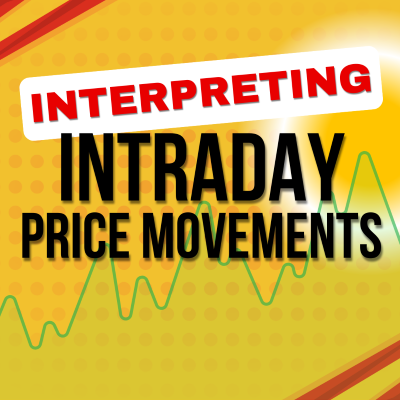
Interpreting intraday price movements is critical for a subjective trader. One fundamental lesson in trading is aligning your analysis with the appropriate timeframe. A two-minute chart is virtually irrelevant for 70-day trades, just as a monthly chart is of little use with day trading strategies. However, we suggest that skills and patterns observed in shorter timeframes are directly transferable to longer ones. Watching a two-minute chart can help hone decision-making skills that are applicable when analyzing daily or weekly charts.
Click here to learn more in this enlightening video.
00:00 – Intraday Price Movements 00:41 – Chart Timeframes 02:04 – Market Analysis Skills Training 02:40 – Long Position Trading Guidelines 03:43 – Risk Reward Ratio Ranges 05:44 – Day Trading Allure 07:45 – Overnight Risk Can Be Controlled 08:07 – Futures Trading Caution 10:06 – Trends and Patterns 11:21 – Chart Plan 13:00 – Signal To Exit 14:36 – Long Entry Signal 16:47 – Reversal Trade 18:19 – Stops 20:00 – Bad Trade 21:44 – Trail or Laddered Trail Stop 24:13 – Cup and Handle Pattern Formed 22:13 – Going Short 25:13 – Exit Points 28:20 – Learn patterns! 31:41 – Remove Risk
Subscribe: YouTube
Subscribe: Soundcloud
**Risk and Reward in Trading**
When trading long positions, the emphasis should be on a favorable reward-risk ratio. Locke advises aiming for a minimum of 3:1. This means your potential reward should be at least three times the risk of your stop target. By setting reasonable stop and target numbers based on chart analysis, you can determine the viability of a trade. For instance, a 5:1 reward-risk ratio allows you to break even by winning as few as 20% of your trades—an concept that Locke emphasizes is necessary for understanding likely profitability.
**Managing Trades and Risk**
Effective risk management is critical, especially when dealing with overnight markets. Locke explains that while trading futures might seem low risk, realistic risks such as technology failures must be considered. To mitigate overnight risks, you can employ structural risk management using options. A long option approach limits your potential losses to the amount invested in the long option, preventing catastrophic financial outcomes.
**Trading Strategies and Patterns**
Identifying market trends and patterns is key to successful trading. Locke suggests looking for trend breaks and choosing control points for setting stops. Define a reasonable move potential and size your trades according to your stop risk. The goal is have high potential gains but more importantly to focus on managing the risks effectively. As you trail stop the trade, look for early exit signals based on observed market reversals and patterns.
**Conclusion**
Trading is a complex yet rewarding endeavor that requires continuous learning and adaptation. As John Locke emphasizes, mastering technical analysis and understanding market behaviors are essential for becoming a successful options trader. By focusing on appropriate timeframes, maintaining a favorable reward-risk ratios, and managing trades with precision, you are more likely to achieve financial success in options trading. Whether you are a novice or an experienced trader, the strategies discussed here offer valuable insights to help enhance your trading skills.
Visit LockeInYourSuccess.com/memberships for more information and start your journey towards becoming a proficient options trader today.



Leave a Reply
You must be logged in to post a comment.